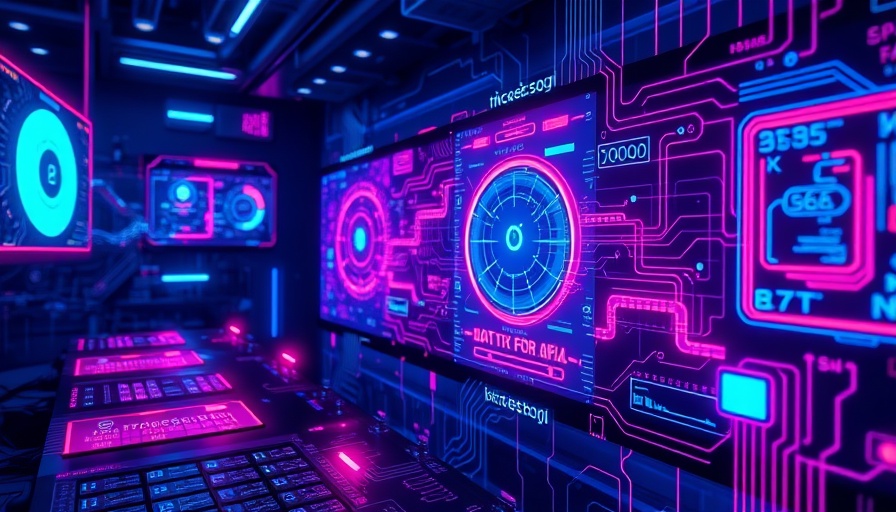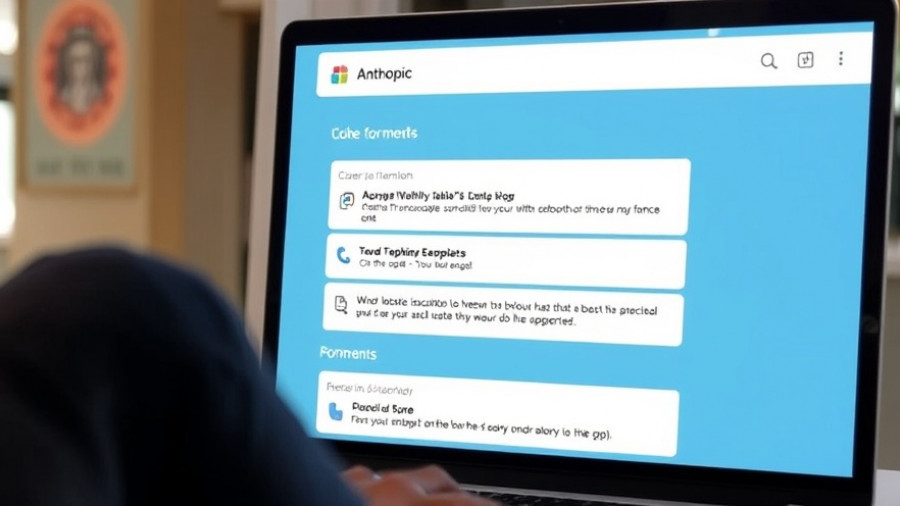
The New Standard in Software Development: AI Collaboration
In the rapidly evolving software landscape, the integration of artificial intelligence has become a game-changer, fundamentally transforming how developers operate. IBM's recent partnership with Anthropic exemplifies this trend, bringing powerful AI capabilities to the forefront of software development. This collaboration aims to streamline the Software Development Life Cycle (SDLC), with the chatbot Claude at the heart of the initiative, promising notable gains in productivity and efficiency.
What the Partnership Means for Developers
IBM’s integration of Anthropic's Claude into its software suite is expected to deliver significant enhancements to developer workflows. By automating mundane tasks and embedding critical security and compliance controls directly into development processes, IBM asserts that productivity could see an increase of up to 45%. This potential boost is not only about speed but also about improving the quality of code and ensuring robust security protocols through constant monitoring and sophisticated automation.
Historical Context: Blending AI into Developer Practices
Historically, the role of AI in software development started as a limited experimental tool, largely reserved for niche applications. However, today, the situation has dramatically shifted. Nearly 97.5% of developers now use AI tools, which have become essential in filling skill gaps and accelerating development processes across startups and large enterprises alike. This partnership between IBM and Anthropic aligns with this trend, pushing AI from the periphery into the core of software coding and lifecycle management.
The Impact of AI on Developer Productivity
A deep dive into AI's impact reveals that automation is key in boosting developer speeds. According to findings from McKinsey, AI tools now enable coding tasks to be completed up to twice as efficiently compared to traditional methods. Features such as AI-powered code completion, automated testing, and intelligent bug detection are becoming mainstays, as companies recognize that they can allow developers to focus on higher-level problem-solving.
Future Predictions: The Evolving Landscape of Software Development
The rise of AI tools represents a transformative moment for software development, reshaping developer responsibilities and enhancing team productivity. As we look ahead, we can anticipate further integrations of AI technologies that not only expedite workflows but also introduce tools that will assist in architecture-level decisions, predictive analysis, and the ongoing evolution of agile practices.
Challenges and Considerations with AI Integration
Despite the positive projections, companies adopting AI tools must remain vigilant about the challenges that accompany increased automation. The risks of technical debt due to accelerated coding speeds and the introduction of potential security vulnerabilities from AI-generated code necessitate rigorous quality checks and enhanced human oversight. Moreover, balancing speed with maintainability and accuracy will be paramount.
Conclusion: Embracing the AI Future of Software Development
The collaboration between IBM and Anthropic is a significant milestone, exemplifying how AI can enhance the software development lifecycle. As organizations embrace these innovations, the next few years will undoubtedly see a deeper integration of AI tools. Developers must view AI not just as a tool for efficiency but as a partner in creativity—freeing them to focus on innovation while handling the tedious aspects of coding.
 Add Row
Add Row  Add
Add 




Write A Comment